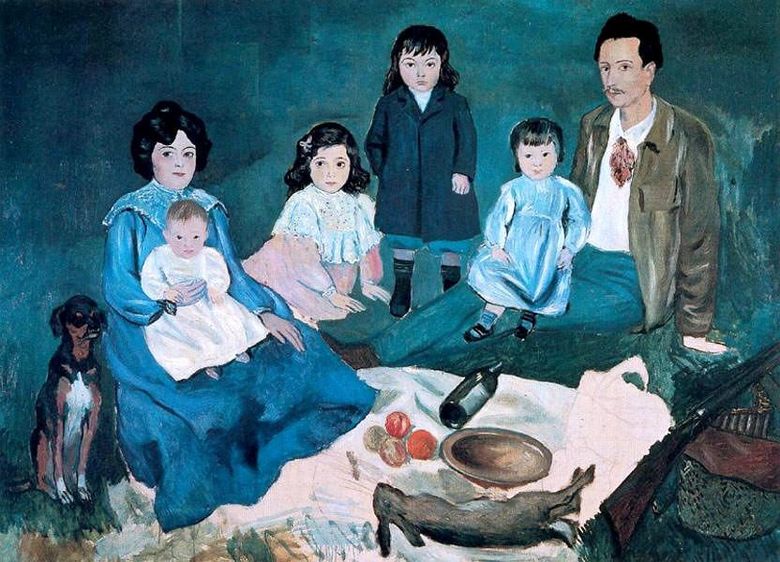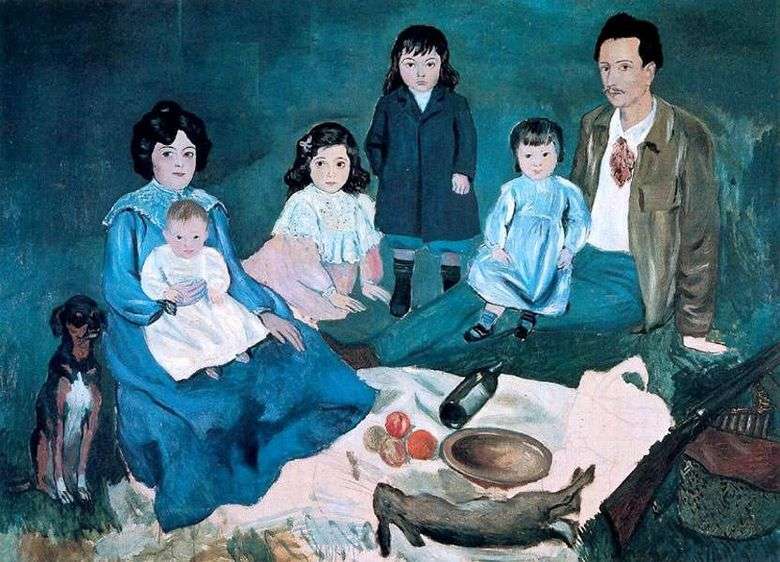
Along with the screaming, woeful, sad and deeply philosophical works of Pablo Picasso’s blue period of creativity, there are several paintings that do not bear such tragic motives, although they do not contradict the general range chosen by the artist at that time. The Soler Family is one such creation.
As you know, in the early 1900s, Picasso was in serious need and was happy to take on orders that promised at least some profit. Soler was a successful tailor from Barcelona. It is not known what the young artist, who was then only 21 years old, liked, was a prosperous tailor, but he ordered several paintings for him – his own portrait, his wife’s portrait and a group portrait. One of the paintings of this conditional triptych is today in the Hermitage Museum in St. Petersburg.
The family portrait “The Soler Family” is made in the so-called “breakfast on the grass” genre, which was once fashionable among impressionists. A large family of Soler is located around a crumpled tablecloth on the ground. The entire background of the picture is given conditionally – it is only indicated by a contrasting dark blue color. The “breakfast” itself is also very sketchy and original – an empty plate, some fruit, an overturned bottle and a rabbit, which supposedly had just been shot down.
All attention is focused on family members, it was obviously important for the customer to see and recognize everyone in the family portrait, even a dog as if posing for a young master.
Despite the fact that all faces have distinctive features, the author remained faithful to his individual unique manner – some generality and lasciviousness. The picture is made in blue tones, which were characteristic of this period of the corresponding name, however, the colors do not bear here the usual dramatic semantic meaning. Rather, on the contrary, the author managed to portray the warm family atmosphere in cold tones. However, opinions on this matter may differ.
It is not known whether the customer liked the work, however, the family portrait, written in the form of a genre scene, entered the annals of the masterpieces of world painting. The painting is in Liege today and is on display at the Museum of Modern Art.
 La famille Soler – Pablo Picasso
La famille Soler – Pablo Picasso Family of Comedians by Pablo Picasso
Family of Comedians by Pablo Picasso Familia Soler – Pablo Picasso
Familia Soler – Pablo Picasso I, Picasso by Pablo Picasso
I, Picasso by Pablo Picasso Breakfast of the Blind by Pablo Picasso
Breakfast of the Blind by Pablo Picasso Boy with a pipe by Pablo Picasso
Boy with a pipe by Pablo Picasso The boy is the lead horse by Pablo Picasso
The boy is the lead horse by Pablo Picasso Old guitarist by Pablo Picasso
Old guitarist by Pablo Picasso